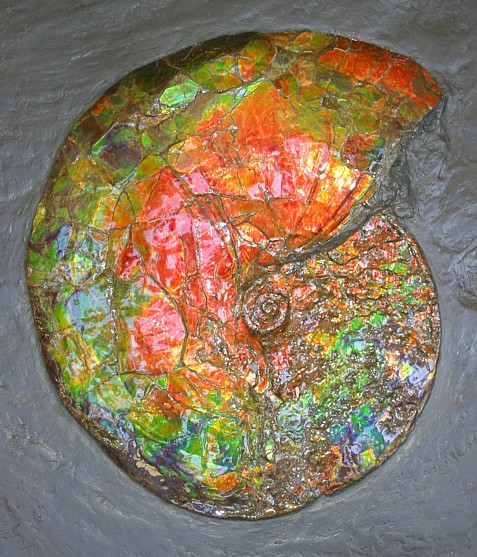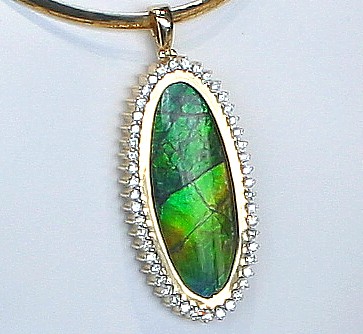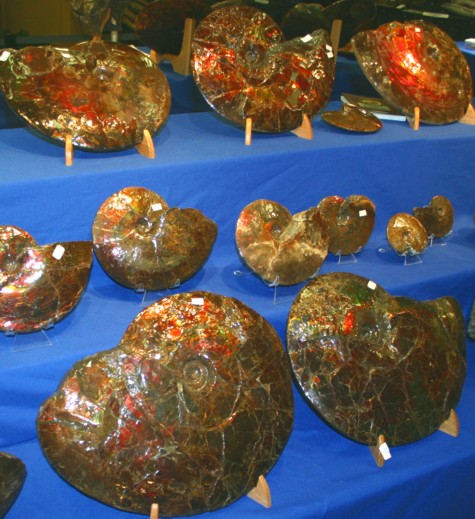
| AMMOLITE MINERAL FACTS |  |
|
| The Gem and Mineral Collector's Photo Gallery by Nevada Outback |
|
. Ammolite Mineral Facts:
Chemical Formula: CaCO3
These beautiful specimens are the fossilized remains of Ammonites, an extinct group of marine invertebrate animals known as Cephalopods. Although they appear very similar to the living shelled Nautilus species, these mollusks actually are more closely related to living octopuses, squid, and cuttlefish. Colors: Various iridescent shades of red, green, blues, purple, yellows, orange, etc.
Hardness:
3.5 to 4
Density:
2.95 Cleavage: One distinct cleavage on 010, one poor cleavage on 110, parallel to macropinacoid. This is the same as arragonite, but in practice as the carbonate mineral is microscopic, no cleavages are ever seen.
Crystallography: Orthorhombic Luster:.Vitreous, transparent to translucent. Optics: (Refractive Index): a = 1.53; b = 1.68; y = 1.685
Composition,
Structure and Associated Minerals: |
|
|
 |
||
Occurrence,
Localities and Origins: Significant deposits of gem-quality ammolite are found in the Bearpaw formation that extends from Alberta to Saskatchewan in Canada and south to into Montana in the USA. Most commercial mining operations have been conducted along the banks of the St. Mary River, in an area south of and between the town of Magrath and the city of Lethbridge. Commercial extraction is mechanized but fairly basic: shallow open pits are dug in the shale with a backhoe and the excavated material is screened for its potential gem contents. The open pits are further examined by individuals, and the commercial production is supplemented by these individuals who sell their findings to the commercial ammonite producers. The ammolite deposits are stratified into several layers: the shallowest of these layers lies about 15 meters below the surface and extends to 30 meters down. The ammolite within this layer is covered by siderite concretions and is usually cracked. This is the most common material. Beginning twenty meters below the crushed material is a zone where the ammolite is usually compressed with a thin layer of pyrite rather than siderite concretions. This is the sheeted material that is of higher quality, but due to its depth is rarely mined. Return to the Mineral Collectors Information Page |
 |
|
 |
|
|
Please note that the author, Chris Ralph, retains all copyrights to this entire document and it may not be reproduced, quoted or copied without permission.

NEVADA OUTBACK GEMS TURQUOISE AND JEWELRY